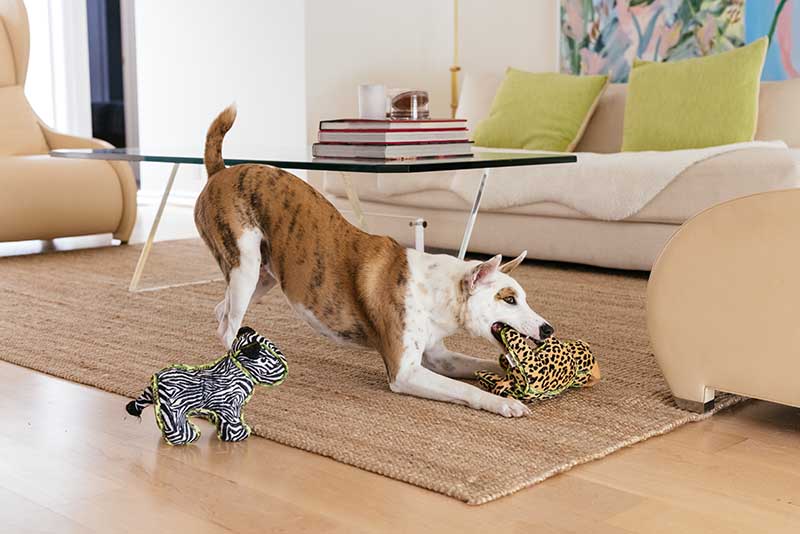Working as a vet tech, you hear many stories of cats hacking up hairballs. Pet parents often call the clinic in a panic because their cat is gagging and retching in such an intense way they fear he will die.
All that cat coughing and gagging are often little more than the result of swallowed hair. What they are coughing up is something called a cat hairball. Some cats have frequent hairballs, and others only have occasional hairballs.
Still, it can be quite distressing to a feline’s loving human friend. So what can you do for hairball control? Let’s take a look at why hairballs form, when to be worried about them, and what are effective hairball remedies.
What Causes Hairballs?
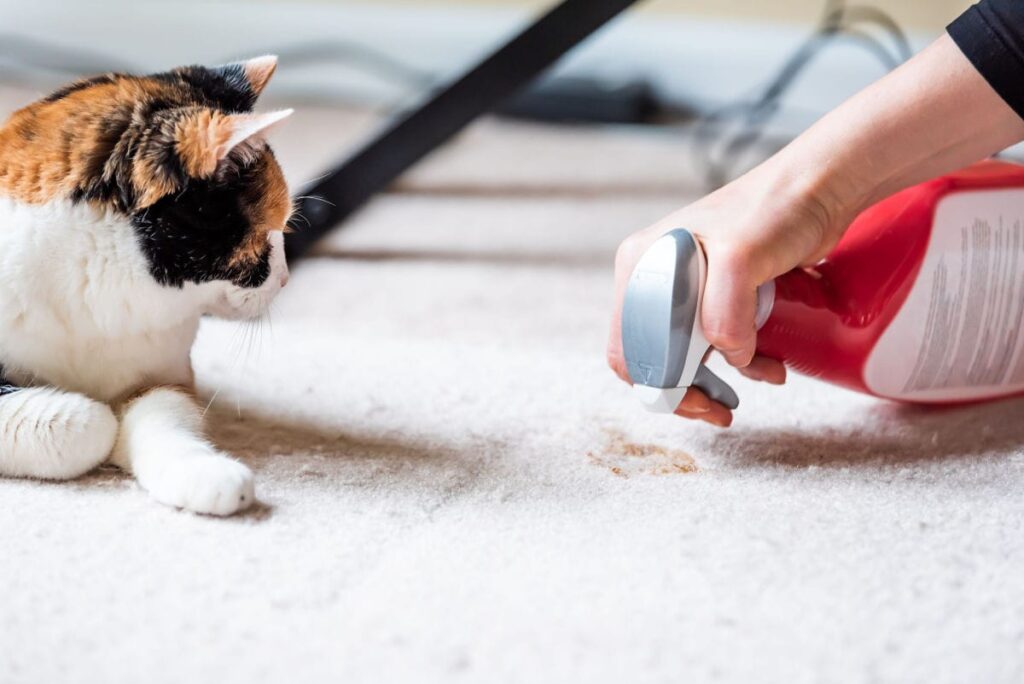
While cat hairballs are unpleasant for their pet parents, they can become a serious health problem for your cat. They can cause intestinal blockages, which may require surgery to treat. So how do they form?
You have probably noticed that your cat grooms himself all the time. In fact, cats are fastidious when it comes to staying clean. Their tongue is made up of tiny hook-like barbs that will catch loose, dead hair as they do this.
That cat fur is then swallowed, and most of it passes through to your cat’s digestive tract without causing any problems. But some of it may stay in his stomach and form a hairball.
Often your cat vomits that hairball to get rid of it. Since it passes through their narrow esophagus as he is vomiting, the resulting hairball appears tube-like, and it may be variably colored depending on your cat’s diet.
Long-haired cats, such as Persians and Maine Coons tend to have more hairballs than short-haired cats. That’s because they shed a lot, and they may also groom themselves more compulsively.
Cats also become better groomers as they get older, and that’s why you’re more likely to see hairballs in older cats as opposed to kittens.
As a loving cat parent, your next questions are likely to be what are the symptoms of hairballs, and when should you worry?
What are the Symptoms of Hairballs?

I don’t know if you ever saw that animated movie where Antonio Banderas starred as Puss-N-Boots, but he did a marvelous job of mimicking a cat attempting to eliminate a hairball. The common symptoms include gagging and retching, which is usually followed by your cat vomiting up the disagreeable hairy package.
If your cat has some more serious symptoms, however, it can indicate he has a more serious health problem. You should contact your veterinarian if you see the following indications your feline friend might have a life-threatening intestinal blockage:
- Continuous vomiting, gagging, or retching without producing a hairball
- Lack of appetite
- Lethargy
- Constipation
- Diarrhea
These symptoms can be caused by other problems as well, but they are serious enough to warrant a visit to the DVM. So is there a way to prevent this problem or treat it with home remedies?
How are Cat Hairballs Treated?
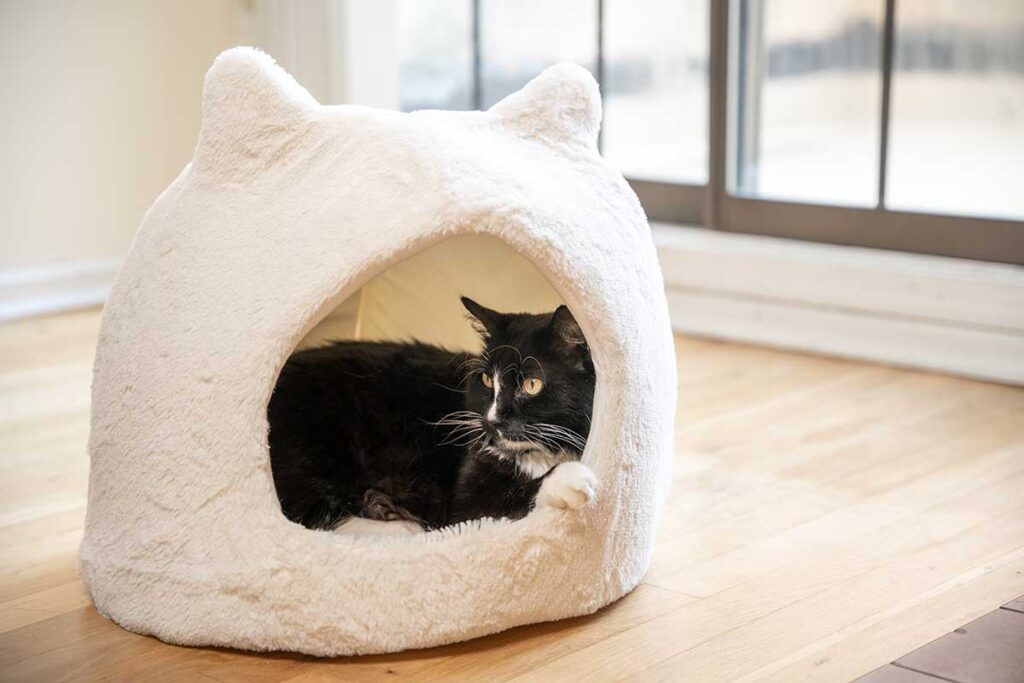
The first thing you should consider is how often you are seeing hairballs in your feline friend. Keep track of how often your kitty is producing a hairball, and if you’re finding that it’s happening more than once a month, you can consider that frequent.
Frequent Hairballs
If you are seeing frequent hairballs, it could be a sign of some kind of underlying feline health problem. That means it’s time for a visit to the vet.
Most of the time, your vet will look for things that might cause frequent hairballs, such as mites, ringworm, and other types of skin problems that could cause excessive grooming. This means they might do skin scrapings and cytology tests.
Your vet will also likely do some blood work, a urinalysis, an examination of your cat’s feces, and abdominal X-rays to look for parasites and other problems that could be causing problems with the passage of hair through your cat’s digestive system.
It’s even possible they may want to do something like a biopsy of the gastrointestinal tract or skin if they suspect certain diseases may be causing the problem.

Occasional Hairballs
If you’re just seeing a furball every now and again, you may be able to control the problem with some changes to your cat’s diet and the use of certain home remedies. Let’s start with dietary changes.
Hypoallergenic Diets
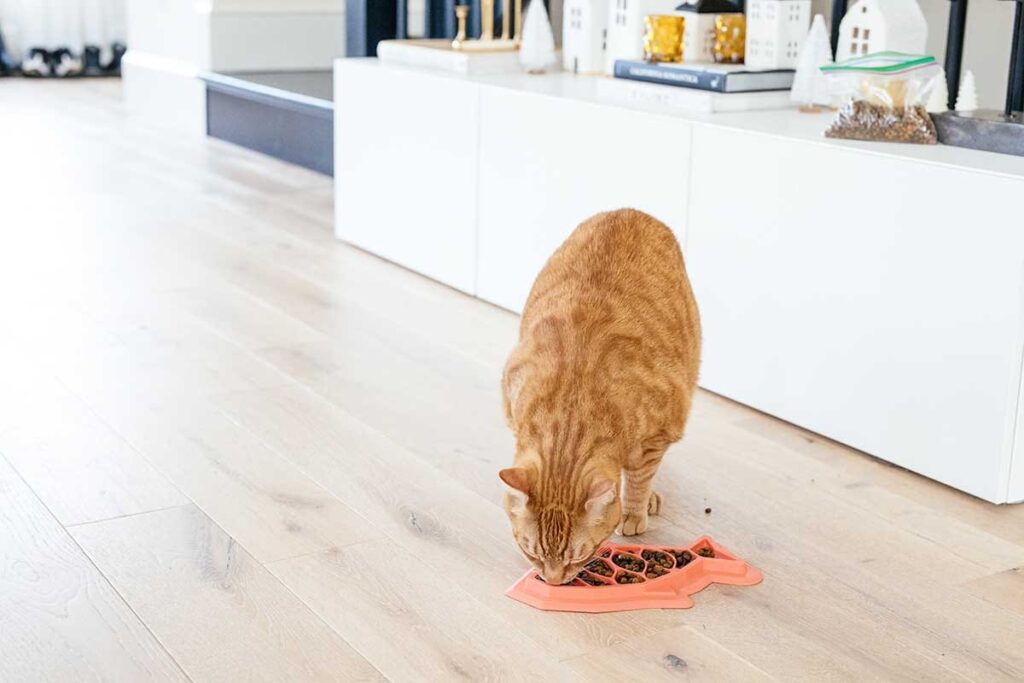
If your cat has an undiagnosed food allergy or something like inflammatory bowel disease, that could play a role in the formation of hairballs. These kinds of conditions cause inflammation in the intestinal tract, which then interferes with the passage of hair through the system.
If this is the case, a hypoallergenic diet can help. You can usually find these types of diets over the counter in pet food stores, and you want to look for products that contain only one major protein source. It should be something your cat has not eaten before.
You’ll need to read the label carefully to be sure of what is included in the food. Once you find one that is suitable, feed that diet exclusively for 8 weeks before making a determination of whether or not it is helping.
If it doesn’t seem to be helping, but you think this is the problem, you can also ask your vet about prescription diets. While more expensive, those tend to be significantly less allergenic than over-the-counter products.
High-Fiber Cat Food for Hairball Control
Another factor in your cat’s diet that may help with hairball control is feeding high-fiber foods. Specifically, insoluble (indigestible) fiber sources help your cat pass hair through its system.
Additionally, soluble fiber helps with that too, but it also promotes overall gut health. Moreover, the bacteria in your cat’s large intestine partially break down those soluble fibers, which then produce important energy sources for the cells that line the intestinal wall.
You can get high-fiber cat food at the pet store. Look for those formulas that are labeled as hairball diets. More specifically, you want to look for dry food diets that have a crude fiber percentage of 8 – 10%. For canned foods, look for those with 2 – 4% fiber.
You can also add canned pumpkin or unflavored psyllium to your cat’s food to add fiber to what you’re already feeding.
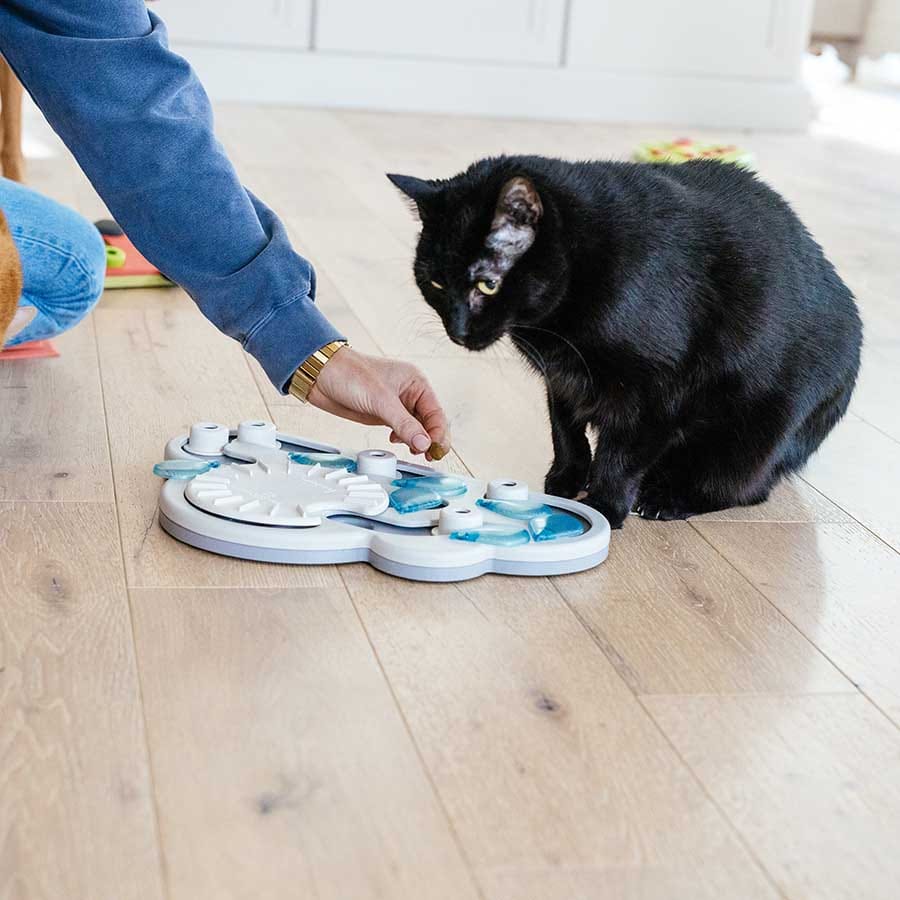
Hairball-Control Treats
You want the overall majority, meaning 90% or more, of your cat’s diet to be made up of nutritionally complete, balanced foods. The rest can be provided by cat treats.
You can use hairball treats to help boost either the soluble or insoluble fiber content of their diet. It’s also good to combine hairball treats with a hairball diet.
Lubricant Gels and Pastes for Hairball-Control
There are also several different lubricant gels and pastes you can use for hairball control. Petroleum jelly is one, as are some waxes and oils, such as olive oil. These work by coating your cat’s hair so that it won’t form clumps.
You should exercise caution when using these, however, since forcing your cat to eat these lubricants might cause stress that could outweigh any potential benefit. There are, however, some tricks you can use to get your cat to swallow them.
One thing you can do is wipe the lubricant on your cat’s paw. Your cat will immediately give you a look of disgust and then start licking the material off of his paw.
If you are feeding a hypoallergenic diet or otherwise limited-ingredient diet, you want to avoid giving him any flavored hairball lubricants.
Other Home Remedies You Can Use to Treat Hairballs
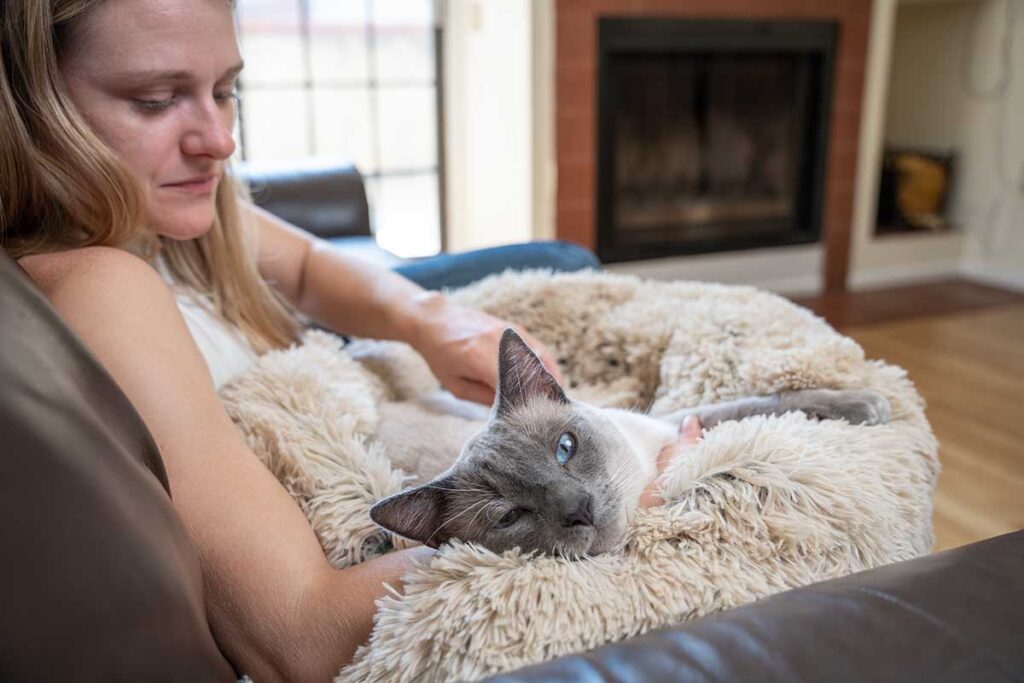
There are some other home remedies that can help control hairballs. Here are a few that are easy and inexpensive.
Brush Your Cat
A simple non-dietary hairball remedy is to brush your cat’s coat frequently. Any hair you remove by brushing is hair that your cat won’t be swallowing. It’s also hair you won’t be cleaning up with a paper towel after your cat has vomited it.
Finish up your grooming session by wiping your cat down with a moist paper towel. That will remove additional loose hair to help prevent hairballs.
A Little Butter Goes a Long Way!
Butter works like lubricant gels and oils to help slide the hair through your cat’s digestive system. Melt a little bit of butter in the microwave and drizzle it on your cat’s food once a week. He will probably like it much better than the pastes and other lubricants.
Dietary Supplements
Adding more fiber or fatty acids to your cat’s diet with supplements can help him pass hair more easily. Many supplements, like canned pumpkin, will get things moving in no time.
Mild Laxatives Can Work Too
You can also give your cat some mild laxatives to help things move more readily through his digestive tract. Miralax (PEG 3350) is commonly used in cats with constipation, and Colace (docusate) can also be used. Your veterinarian can give you the proper dosage. They can also provide you with Laxatone to help in the short term.
Final Thoughts

There’s nothing like waking up to a cat’s hairball problem to ruin your morning. It’s even worse if you find it by stepping on it! I know, gross, but cat parents know what I’m talking about.
It’s not only disagreeable, it’s hard to watch your feline friend gag and retch as he tries to cough up that hairball. Frequent hairballs can also be a sign of a more serious problem.
That’s why it’s important to do what you can to prevent hairballs. These methods can all help your cat avoid the hairball problem!

